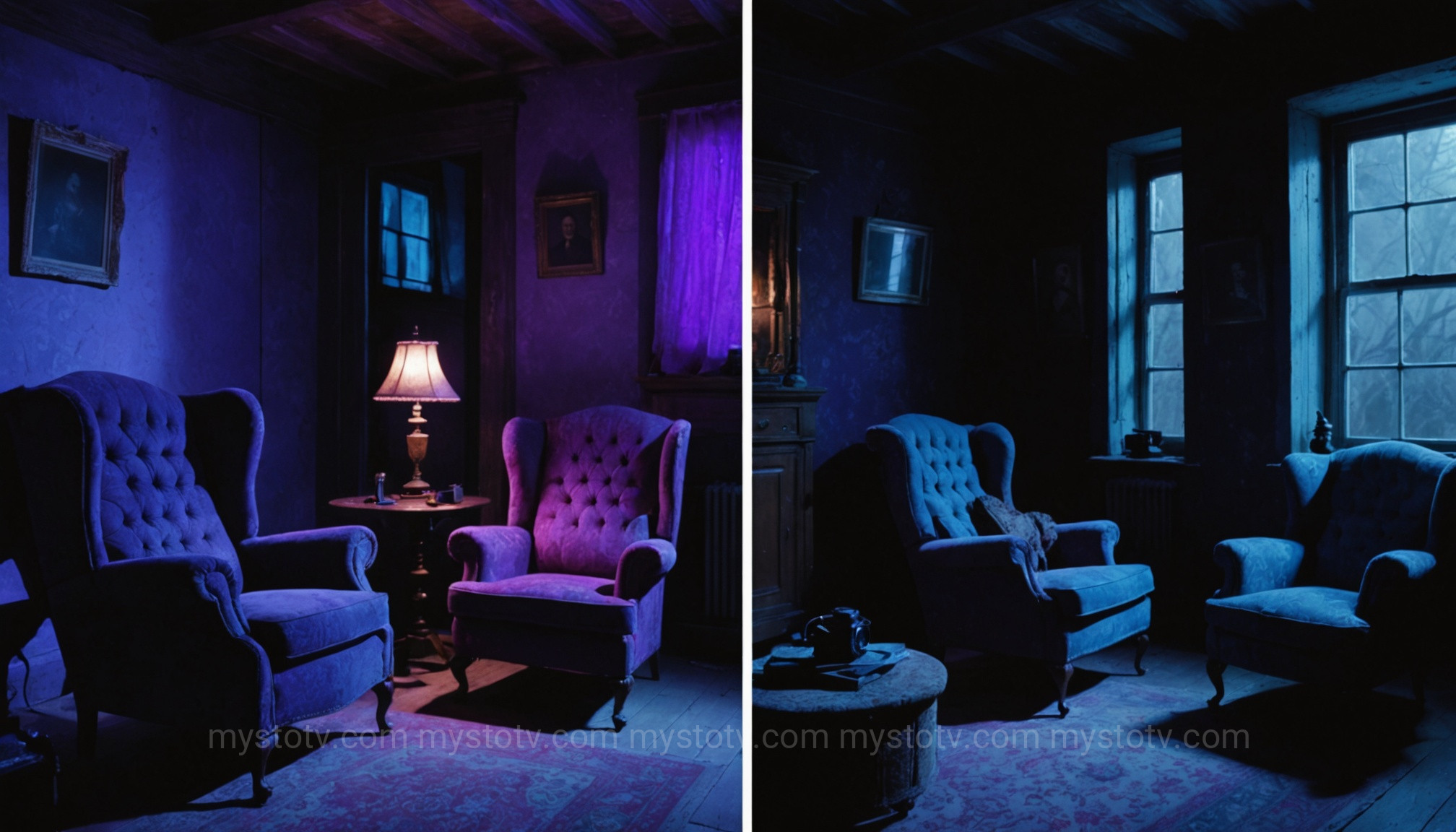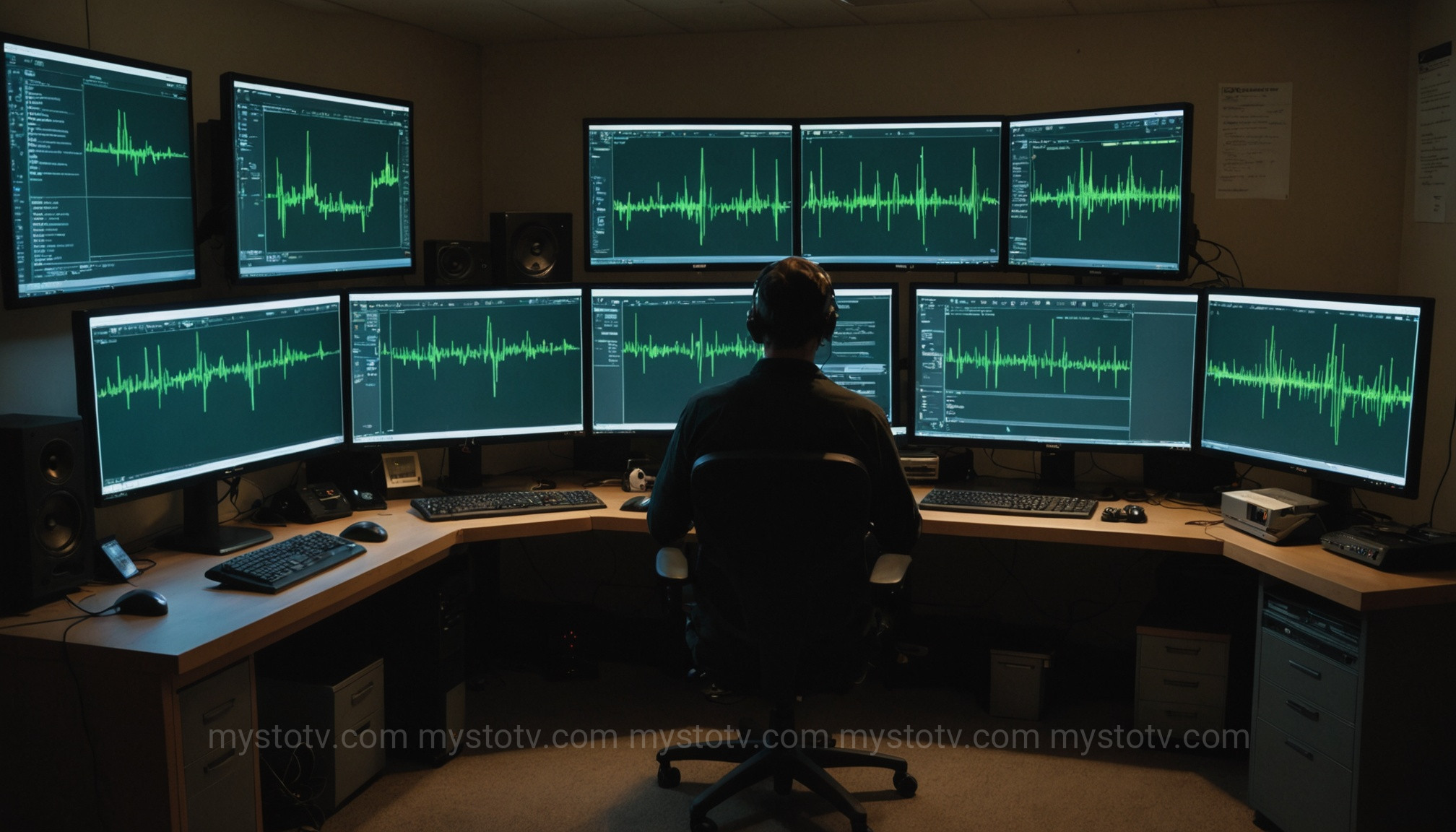Contents
- 1 Foundational Paranormal Research Methods: The Pre-Investigation Phase
- 2 On-Site Investigative Paranormal Research Methods: The Core of the Investigation
- 3 Human-Centric and Subjective Paranormal Research Methods: The Role of Perception
- 4 Post-Investigation Analysis: The Crucial Final Step in Paranormal Research Methods
- 5 Conclusion: The Evolving Landscape of Paranormal Research Methods
Foundational Paranormal Research Methods: The Pre-Investigation Phase
The most compelling paranormal evidence is often built upon a strong foundation of preliminary work. Before any equipment is switched on, investigators dedicate significant time to understanding the history and human context of a location. These foundational paranormal research methods are non-negotiable for any team aiming for credible results, as they provide the essential framework upon which all on-site findings are evaluated. This phase separates aimless ghost hunting from structured research by establishing a baseline of known facts, historical narratives, and personal claims that will guide the entire investigative process.
Historical and Archival Research
One of the most critical pre-investigative paranormal research methods is deep historical research. Investigators delve into public records, libraries, historical societies, and digital archives to construct a detailed timeline of the property and the people associated with it. This involves examining land deeds, census records, building blueprints, old newspapers, and personal diaries. The goal is to uncover documented events—such as deaths, tragedies, or significant emotional moments—that may correlate with the reported paranormal activity. For instance, if witnesses report hearing a child's laughter in a specific room, discovering that the room was a nursery where a child tragically died provides a powerful, albeit circumstantial, link. This historical context prevents investigators from operating in a vacuum and helps to form specific, targeted questions during the on-site phase.
Witness Interviews and Preliminary Surveys
Before an investigation, gathering firsthand accounts is a vital component of the initial paranormal research methods. This involves conducting detailed interviews with property owners, employees, or anyone who has experienced the alleged phenomena. The key is to use non-leading questions to avoid influencing their accounts. Instead of asking, "Did you see the ghost of a man in the hallway?" an investigator should ask, "Can you describe, in your own words, what you experienced in the hallway?" These interviews help to:
- Identify "hotspots" or specific areas with a high concentration of reported activity.
- Establish patterns, such as the time of day or specific conditions under which phenomena occur.
- Understand the nature of the claims, distinguishing between auditory, visual, or sensory experiences.
Analyzing these subjective accounts is crucial. While they are not proof in themselves, they provide the human element and guide the team on where to focus their technological and sensory experiments during the actual investigation.
On-Site Investigative Paranormal Research Methods: The Core of the Investigation

This is the phase most people associate with ghost hunting—the active, on-location data collection. However, for a research-focused team, it is a controlled scientific experiment. Effective on-site paranormal research methods involve using a combination of technology and human observation to systematically capture data that can be analyzed later. The objective is to document any anomalies that cannot be explained by natural or man-made causes. Each piece of equipment has a purpose, and its placement and use are strategic, often guided by the findings from the pre-investigation phase.
Environmental Monitoring: Critical Instrumental Paranormal Research Methods
A core tenet of modern investigation is that spiritual entities may manipulate the environment. Therefore, monitoring environmental variables is one of the most common paranormal research methods. Investigators use a range of instruments to establish a baseline reading for a location and then watch for significant deviations.
- EMF Meters: Electromagnetic Field (EMF) meters detect fluctuations in AC/DC electromagnetic fields. The theory is that spirits may draw on or disrupt these fields to manifest. Investigators look for spikes that have no corresponding natural source, like faulty wiring or active appliances.
- Digital Thermometers/Thermal Cameras: These tools are used to detect sudden and significant temperature drops, often referred to as "cold spots." While a draft from a window can be a cause, a localized, drastic drop in temperature with no discernible source is considered a potential indicator of paranormal presence.
- Geophones and Vibration Detectors: These sensitive instruments detect minute vibrations, such as unexplained footsteps on a floor above or subtle tremors that are not perceptible to human senses.
The analysis of this data is critical. A single EMF spike is just an anomaly. But an EMF spike that occurs simultaneously with a temperature drop and a recorded whisper is a compelling piece of correlated data that warrants much deeper examination.
Auditory Evidence: The Hunt for EVPs as a Paranormal Research Method

Electronic Voice Phenomena (EVP) are anomalous sounds or voices captured on electronic recording devices that were not audible to the human ear at the time of recording. The process of capturing EVPs is a staple paranormal research method. An investigator will typically enter a quiet room, start a digital audio recorder, and ask a series of questions with long pauses in between. For example, "Is there anyone here with us? Can you tell us your name?" The recording is later analyzed with high-quality headphones. The critical challenge with EVP evidence is a psychological phenomenon called audiopareidolia, where the brain tries to find familiar patterns (like words) in random noise. Therefore, EVPs are graded by class: Class A (clear and understandable), Class B (faint but discernible), and Class C (very faint, questionable). Only high-quality Class A EVPs that are contextually relevant to a question are considered strong evidence.
Visual Documentation: Advanced Paranormal Research Methods for Capturing Evidence
Capturing a phenomenon on camera is often considered the holy grail of paranormal investigation. Investigators use an array of visual paranormal research methods to document their surroundings.
- Static Night-Vision Cameras: Multiple cameras are often set up to monitor "hotspots" continuously. This provides a constant, unbiased eye on an area, allowing investigators to review hours of footage for any anomalies, such as shadow figures, moving objects, or unexplained light phenomena.
- Full-Spectrum and Infrared (IR) Cameras: These cameras are modified to capture light beyond the visible spectrum for humans. The theory is that some phenomena may only be visible in the ultraviolet or infrared ranges.
- Photography: Investigators often take hundreds of photos, sometimes in bursts, hoping to capture something the naked eye missed.
Critical analysis is paramount. Investigators must be experts at debunking common false positives like dust orbs, insects close to the lens, lens flare, and pareidolia (seeing faces or figures in random patterns). True visual evidence is rare and must withstand intense scrutiny.
Human-Centric and Subjective Paranormal Research Methods: The Role of Perception
While technology forms the backbone of modern investigation, some of the oldest paranormal research methods rely on human perception and intuition. These methods are often controversial and difficult to quantify, but many teams incorporate them as a way to guide their technological experiments. The key to using these methods responsibly is to treat the information gathered as anecdotal leads rather than hard evidence, and to implement strict controls to prevent bias and suggestion from contaminating the investigation.
The Role of Sensitives: A Subjective Approach to Paranormal Research Methods
Some teams work with individuals known as "sensitives" or "mediums," who claim to be able to perceive or communicate with spiritual entities. When used as a structured paranormal research method, the sensitive is often subjected to a "blind" walk-through. They are given no prior historical information about the location and are asked to report any impressions, names, or events they perceive. Investigators then cross-reference these claims with the historical research conducted beforehand. A high degree of correlation between the sensitive's "blind" reading and documented historical facts can be compelling. However, due to the lack of scientific repeatability and the potential for cold reading techniques, this information is almost always used to direct the technological side of the investigation rather than as standalone proof.
Post-Investigation Analysis: The Crucial Final Step in Paranormal Research Methods

The investigation does not end when the team packs up its gear. In fact, the most labor-intensive work is just beginning. Post-investigation analysis is arguably the most important of all paranormal research methods, as it is where raw data is transformed into potential evidence through a process of painstaking review, correlation, and debunking. This phase requires patience, objectivity, and a commitment to the truth, whatever it may be.
Evidence Review: The Scientific Foundation of Modern Paranormal Research Methods
This phase can take weeks or even months. It involves every team member meticulously reviewing all collected data. This means listening to every second of audio, watching every frame of video, and analyzing every data log from environmental sensors. The goal is to find anomalies and, more importantly, correlations. For example, a reviewer might find an EVP of a whisper on an audio recorder. They will then check the timestamps on all other data. Did an EMF meter spike at that exact moment? Did the temperature drop? Was a shadow figure captured on a camera in the adjacent room? It is this triangulation of data—multiple independent devices capturing an anomaly at the same time—that elevates a strange occurrence to the level of compelling evidence. Without this rigorous cross-referencing, all findings remain isolated and inconclusive.
The Art of Debunking within Paranormal Research Methods
A credible investigator's primary goal is not to prove a haunting, but to find the rational explanation for a reported experience. This commitment to debunking is a cornerstone of ethical paranormal research methods. Investigators apply the principle of Occam's Razor, which states that the simplest explanation is often the correct one. Before any claim of paranormal activity is made, all possible natural causes must be ruled out. This means investigating old plumbing for strange noises, checking for drafts that could cause cold spots, identifying reflective surfaces that could create light anomalies, and recognizing how mundane objects can create spooky shadows. Only the evidence that survives this gauntlet of logical and scientific skepticism, like a 'shadow' or an 'orb' captured during the investigation, can be presented as potentially paranormal.
Conclusion: The Evolving Landscape of Paranormal Research Methods
The world of paranormal investigation is a fascinating intersection of science, history, and the profound mysteries of human experience. The paranormal research methods employed today reflect a growing desire for credibility and tangible results. By combining meticulous historical research with controlled on-site experiments and a rigorous, skeptical analysis process, investigators are moving beyond simple ghost hunting. They are becoming data collectors and analysts in a field that continues to push the boundaries of our understanding. While definitive proof remains elusive, the systematic application of these evolving paranormal research methods ensures that the search for answers is conducted with the integrity and intellectual honesty the subject deserves.